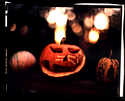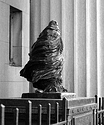I am wondering what emulsions contain enough silver to survive being fused to glass.
I don't know much about what products are available these days.
I had read an earlier post from the photonet forum who mentions:
"As part of my PhD research I have been using liquid light on cast glass with some success using chemistry from Rockland Colloid.
I have used various varnishes as a sub but found the best results from cleaning the glass properly and applying the emulsion direct. I have done this mainly because I am then firing the glass in a kiln. AG-Plus has a higher silver content and so is ideal for firing but regular liquid light works just fine too."
From: https://www.photo.net/discuss/threads/liquid-light-on-glass.231705/
Has anyone tried firing liquid light, and is there an alternative to AG-Plus for high silver content? (it's discontinued)
I don't know much about what products are available these days.
I had read an earlier post from the photonet forum who mentions:
"As part of my PhD research I have been using liquid light on cast glass with some success using chemistry from Rockland Colloid.
I have used various varnishes as a sub but found the best results from cleaning the glass properly and applying the emulsion direct. I have done this mainly because I am then firing the glass in a kiln. AG-Plus has a higher silver content and so is ideal for firing but regular liquid light works just fine too."
From: https://www.photo.net/discuss/threads/liquid-light-on-glass.231705/
Has anyone tried firing liquid light, and is there an alternative to AG-Plus for high silver content? (it's discontinued)
Last edited:







